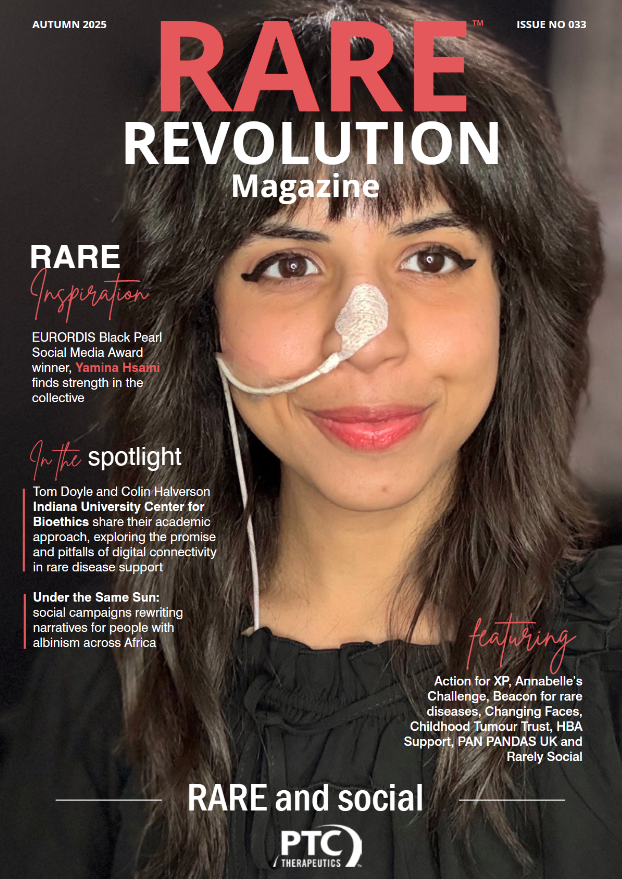Lessons we can all learn from my first, and only, patient to date with idiopathic multicentric Castleman’s disease (iMCD)
A candid account from a medical professional about the challenges of diagnosing rare and ultra-rare diseases and the desire to do the very best for patients and solve their medical puzzles

By Robin Williams, MD, paediatric haematologist/oncologist, M Health Fairview Masonic Children’s Hospital
Avion was the quintessentially complex patient. An intelligent young man of 15 (at the time) and a talented high school athlete, he was admitted to the emergency room (ER) in July 2022 with severe abdominal pain, fever, weakness and hypotension. Almost immediately Avion was transferred to the intensive care unit (ICU) to treat his life-threatening symptoms and rigorously evaluate what was causing them.
Whatever was afflicting Avion appeared to be driven by hyper-inflammation, which in oncology often indicates a haematologic malignancy, such as leukaemia or lymphoma. To explore further we obtained a biopsy from an abnormally enlarged lymph node, but it came back negative for these diagnoses. It was at this time that his blood showed evidence of Epstein-Barr virus (EBV), which led the ICU physicians to think that Avion might have secondary haemophagocytic lymphohistiocytosis (HLH). HLH is a rare condition in which an overactive immune system triggers a cascade of signs and symptoms including the release of hyper-inflammatory markers, destruction of blood cells, fevers, enlarged spleen and liver and enlarged lymph nodes. As there is no diagnostic test for HLH—only diagnostic criteria that need to be met, which applied to Avion’s symptoms—we empirically started treatment for HLH and monitored for response.
Eventually, Avion did show response that stabilised him enough to discharge from the ICU, but he was still very sick and had to stay in the hospital. I first met Avion about a month after his ER presentation, when he came to the paediatric haematology/oncology service. Sicker and more debilitated than I would have predicted for someone who had so recently been in good health, this star athlete couldn’t even lift his head off his pillow; he had a lift in his room because he couldn’t move his own body.
Trying to get to the bottom of Avion’s condition felt like running a marathon, except I didn’t know if I was running in the right direction, much less the right race. Most of the patients I take care of have haematologic malignancies such as leukaemia or lymphoma, for which the diagnosis is definitive, and treatment plans are very straightforward. Avion’s case was different. Although we had a diagnosis and treatment plan that had improved his condition, he was still not well. The only way to describe his situation was that he appeared to be smoldering in front of us.
While Avion’s other blood counts had improved, his platelet counts confusingly remained alarmingly low. What’s more, Avion was having a lot of pain in his hips, for which we obtained imaging. An MRI showed myositis, a non-diagnostic finding of muscle inflammation that is most commonly seen in chronic autoimmune conditions but can also appear in non-rheumatologic hyper-inflammatory syndromes.
I couldn’t understand why someone his age would have swelling in his muscles and low platelets. Also, it was around this time that Avion’s kidney function started to worsen, but a kidney biopsy was strangely inconclusive. None of the tests and procedures we had ordered were telling us what was really going on.
Motivated by my love of medicine and wanting to do the right thing for this patient, I reached out to a friend at Cincinnati Children’s Hospital who specialises in inflammatory disorders. I prepared a PowerPoint presentation about Avion, including information about his myositis, his abnormally low platelets and his kidney biopsy. As I launched into my presentation, he asked, “Have you thought about TAFRO?” I had not, as I didn’t know what it was.
TAFRO syndrome is a condition marked by the presence of thrombocytopenia (low platelets), anasarca (generalised swelling throughout the body), fever, bone marrow fibrosis, renal (kidney) dysfunction and organomegaly (enlarged spleen and/or liver). It is a subtype of idiopathic multicentric Castleman disease (iMCD), a rare, chronic and life-threatening disorder.
The possibility that Avion had iMCD with TAFRO made a lot of sense because the medications he was taking for HLH appeared to also work against the TAFRO but in his case they were only temporising them. Ultimately, we sent a sample from Avion’s biopsy to a haematopathologist with expertise iMCD at Weill Cornell Medicine, who affirmed the diagnosis.
At this point Avion’s condition was getting acutely worse. I searched the literature and found several papers by Dr David Fajgenbaum, associate professor of medicine at the University of Pennsylvania, who, due to his own experience living with and researching iMCD, has become a leading authority on the disease. I spoke to Dr Fajgenbaum as well as the world’s leading authority on Castleman Disease at the University of Arkansas. I absorbed the information about what symptoms I should be looking for and what treatments I should consider, as quickly as I could.
As October came around, we started Avion on several treatments, including chemotherapy as well as other medications known to “cool” patients with TAFRO. At the time I felt like these were extreme measures, but we had to get his disease under control. Thankfully, it worked well for Avion.
Gradually, Avion’s strength returned. He was able to do more physical therapy and declared that he was going to leave the hospital by Christmas. After everything he’d been through that seemed like an overly lofty goal, but sure enough as a testament to his perseverance he made it home for Christmas and continued to improve as an outpatient.
One of the things that struck me about Avion’s case was how hard it is to diagnose iMCD with TAFRO, and how variable patients’ presentations can be. Although there’s a set of criteria for TAFRO, those things are present in other diseases and not every single one of them is present in every single patient.
The more I dug into iMCD and TAFRO, the more astonished I was that we even got to Avion’s diagnosis as quickly as we did. I’ve talked to other clinicians who say iMCD is not one disease. TAFRO is a validated subtype, but the pathology of any iMCD can look quite different among patients, and various symptoms—which can differ per patient— overlap with other diseases.
I think of Dr Fajgenbaum’s Venn diagram for iMCD and how it intersects exactly in the middle of the three circles representing malignancy, rheumatologic conditions and infectious conditions. All the symptoms of iMCD are present in those other conditions both individually and in combination. Although there are haematopathology signatures that can be found on a lymph node biopsy, this disease is largely first recognised as a diagnosis of exclusion. If everything else is ruled out, then it’s worth doing a more detailed evaluation for this ultra rare condition.
We’re so used to having the haematopathologist recognise a pattern indicative of leukaemia or lymphoma. The iMCD pattern is not a normal pattern but it’s not one that automatically screams, “This is Castleman’s!”
It would have been great if I felt like I knew more about iMCD before I met Avion. We all want to be on top of our field, but even within diseases that are less rare there’s more and more that we need to know. When the disease is something you’ve never seen and may never see again, it becomes harder. In the five months Avion spent on our service, we had residents coming on and off, and everyone knew about his case because he was so sick in the ER, he was so sick in the paediatric ICU and he was sick once he got back to our team. I hope Avion’s story really resonates and that his case is taught to every resident.
There’s a saying in medicine: When you hear a stampede, think horses, not zebras. Horses may be something like a standard infection, whereas zebras may be things like HLH. But those who work in rare diseases think of zebras first. When I talk about Avion’s story to other clinicians I refer to him as my unicorn, because his case felt more unique to me than even a zebra. Although Avion certainly did not ask to have such a rare and life-threatening condition, his tenacity and determination are undeniable. Above all, he has put himself and his story out into the world so that doctors can be more well informed and patients feel less alone.
Avion’s story exemplifies how challenging it can be for physicians to recognise when things are better but not best for a patient. I think the biggest thing that Avion’s case has taught me is it’s OK to step back and make sure that we are entirely confident in what we think we’re treating.
Our medical team still talks about Avion all the time. He was so sick when he came to us and now, he’s playing sports again, graduated from high school and starting college. He lost a lot of time to his disease, but he’s here with us and taking advantage of every minute. It’s a privilege for me to tell his story because if somebody else encounters a patient like Avion, maybe they can get to the diagnosis a little bit sooner.
You can learn more about Avion’s story in this short video – please watch!


